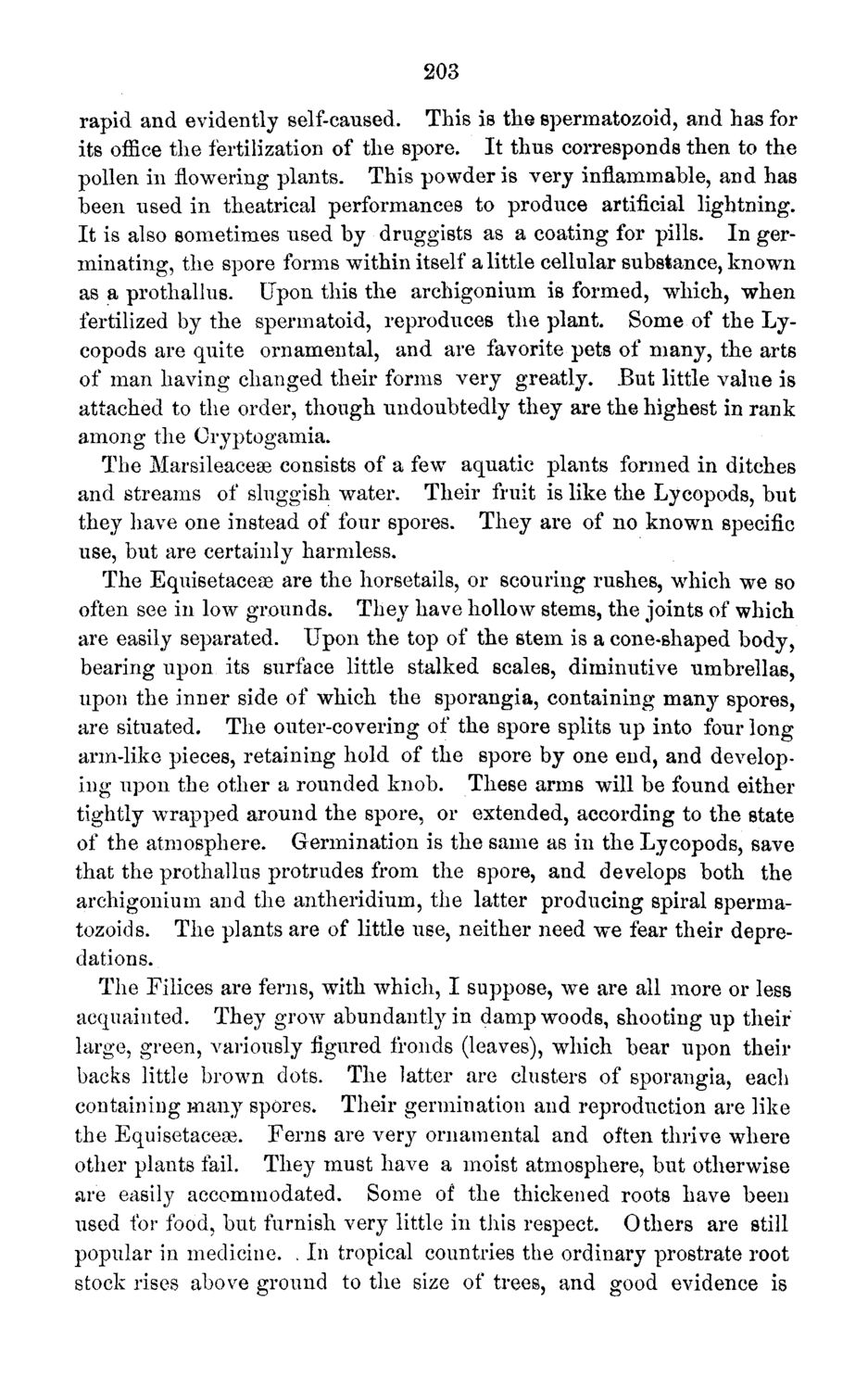| |
| |
Caption: Board of Trustees Minutes - 1871
This is a reduced-resolution page image for fast online browsing.

EXTRACTED TEXT FROM PAGE:
203 rapid and evidently self-caused. This is the spermatozoid, and has for its office the fertilization of the spore. It thus corresponds then to the pollen in flowering plants. This powder is very inflammable, and has been used in theatrical performances to produce artificial lightning. It is also sometimes used by druggists as a coating for pills. In germinating, the spore forms within itself a little cellular substance, known as a prothallus. Upon this the archigonium is formed, which, when fertilized by the spermatoid, reproduces the plant. Some of the Lycopods are quite ornamental, and are favorite pets of many, the arts of man having changed their forms very greatly. But little value is attached to the order, though undoubtedly they are the highest in rank among the Oryptogamia. The Marsileacese consists of a few aquatic plants formed in ditches and streams of sluggish water. Their fruit is like the Lycopods, but they have one instead of four spores. They are of no known specific use, but are certainly harmless. The Equisetacese are the horsetails, or scouring rushes, which we so often see in low grounds. They have hollow stems, the joints of which are easily separated. Upon the top of the stem is a cone-shaped body, bearing upon its surface little stalked scales, diminutive umbrellas, upon the inner side of which the sporangia, containing many spores, are situated. The outer-covering of the spore splits up into four long arm-like pieces, retaining hold of the spore by one end, and developing upon the other a rounded knob. These arms will be found either tightly wrapped around the spore, or extended, according to the state of the atmosphere. Germination is the same as in the Lycopods, save that the prothallus protrudes from the spore, and develops both the archigonium and the antheridium, the latter producing spiral spermatozoid s. The plants are of little use, neither need we fear their depredations. The Eilices are ferns, with which, I suppose, we are all more or less acquainted. They grow abundantly in damp woods, shooting up their large, green, variously figured fronds (leaves), which bear upon their backs little brown dots. The latter are clusters of sporangia, each containing many spores. Their germination and reproduction are like the Equisetacese. Ferns are very ornamental and often thrive where other plants fail. They must have a moist atmosphere, but otherwise are easily accommodated. Some of the thickened roots have been used for food, but furnish very little in this respect. Others are still popular in medicine. . In tropical countries the ordinary prostrate root stock rises above ground to the size of trees, and good evidence is
| |